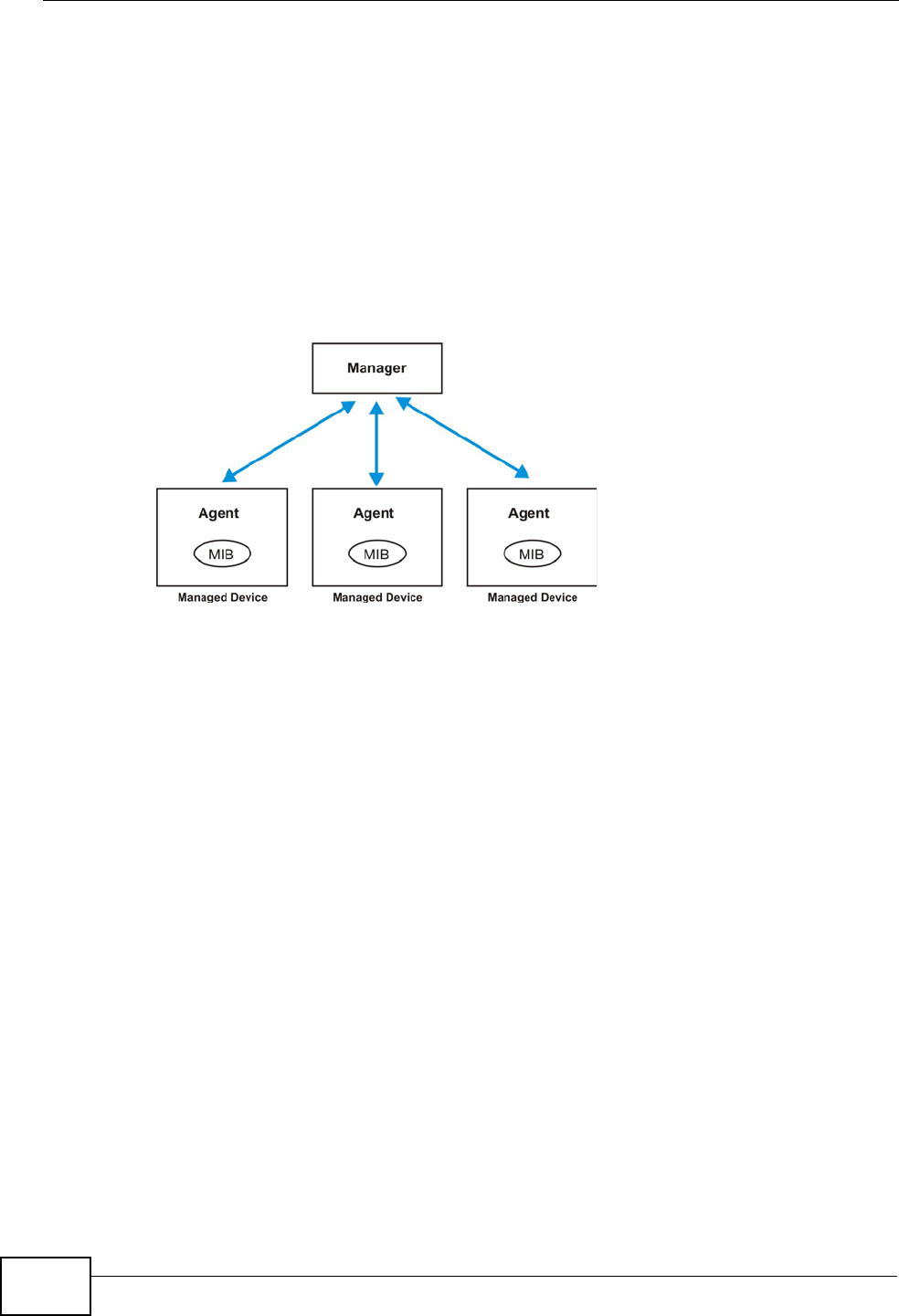
Chapter 39 Access Control
MGS3700-12C User’s Guide
368
39.3 About SNMP
Simple Network Management Protocol (SNMP) is an application layer protocol
used to manage and monitor TCP/IP-based devices. SNMP is used to exchange
management information between the network management system (NMS) and a
network element (NE). A manager station can manage and monitor the Switch
through the network via SNMP version one (SNMPv1), SNMP version 2c or SNMP
version 3. The next figure illustrates an SNMP management operation. SNMP is
only available if TCP/IP is configured.
Figure 191 SNMP Management Model
An SNMP managed network consists of two main components: agents and a
manager.
An agent is a management software module that resides in a managed switch (the
Switch). An agent translates the local management information from the managed
switch into a form compatible with SNMP. The manager is the console through
which network administrators perform network management functions. It
executes applications that control and monitor managed devices.
The managed devices contain object variables/managed objects that define each
piece of information to be collected about a switch. Examples of variables include
number of packets received, node port status and so on. A Management
Information Base (MIB) is a collection of managed objects. SNMP allows a
manager and agents to communicate for the purpose of accessing these objects.


















